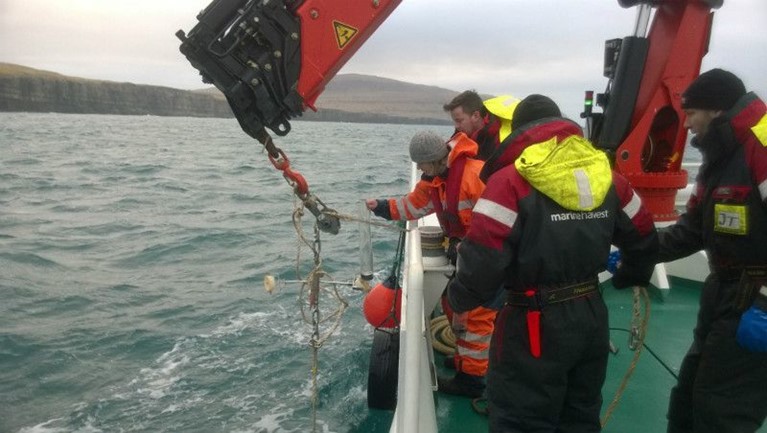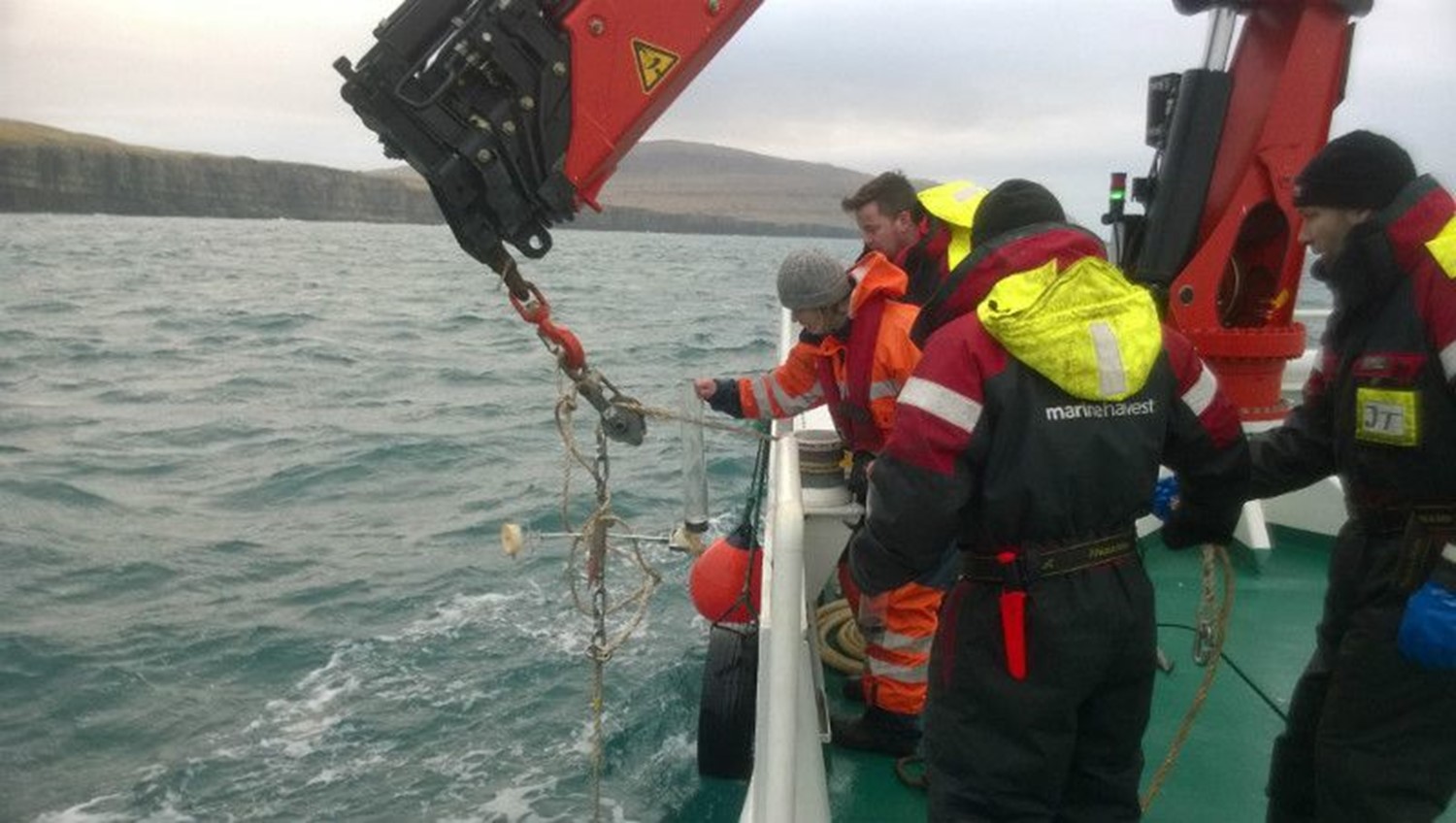RESEARCH: for a few years Fiskaaling has carried out research into the possibility of farming at locations of the Faroe Islands that are more exposed than what has so far been thought of as advisable. Toward the start of spring an attempt will again be made to farm at Sandsvágur. However, not at the same location as previously, where the salmon could not endure the strong currents that developed during heavy surf.
The aquaculture companies would very much like more locations for farming, and a few years ago Fiskaaling initiated a cooperative venture with the aquaculture industry to examine the possibility of having fish cages further out at sea. For instance, one plan was to try east of Nólsoy, which nevertheless did not progress far enough for there to be a clear decision on whether farming was possible at that location.
A more tangible attempt was made at Sandsvágur in collaboration with Marine Harvest, where two sea farming cages were placed with smolt released into them. A lot of knowledge was attained from this project, but it turned out that the fish could not endure the strong currents, which developed when the weather was especially bad.
- We had expected the biggest challenge to be waves, but very unexpectedly it turned out to be the currents, which led to the most problems, and which led to the demise of many fish. This phenomenon where especially strong currents develop during heavy surf from the west is fairly unique, and it has not figured in our measurements from anywhere else on the Faroe Islands, says Øystein Patursson, researcher at Fiskaaling.
Fiskaaling has since researched a larger location at Sandsvágur, and it turns out that the sea farm is located approximately where these currents that develop during heavy surf are at their strongest. By moving further towards the shore or further out it is possible to avoid these currents to some extent. Further in on the bay the waters are fairly shallow and further out the challenges posed by waves are bigger and therefore it is fairly unworkable during winter. Initially the plan is to proceed with the project further in on the bay, explains Øystein Patursson.
Both Fiskaaling and Marine Harvest are now so optimistic as to the possibility of also farming at, for instance, Sandsvágur that the plan is to place two cages with large smolt there in the coming year.
Fiskaaling has also carried out measurements at other exposed locations of the Faroe Islands. Among others at Velbastaður, at Svínaoyarfjørður, at Vestmannasund, and west at Víkir in Vágoy, but so far sea farms are only present at Velbastaður and at Sandsvágur.
Should anyone want further information on this, it is possible to contact Øystein Patursson, researcher at Fiskaaling, tel. no. +298 774787.


